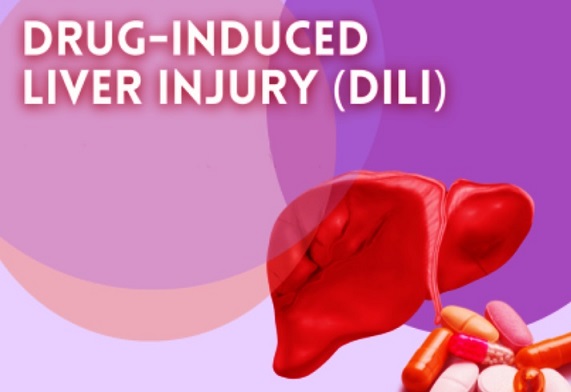Nikhil Prasad Fact checked by:Thailand Medical News Team Jan 04, 2025 3 months, 3 weeks, 1 day, 44 minutes ago
Medical News: Introduction to the Silent Epidemic
Drug-induced liver injury (DILI) is becoming a rising concern for healthcare systems worldwide. This condition, triggered by adverse reactions to medications, poses diagnostic challenges due to its similarity in presentation to other liver ailments such as viral hepatitis and alcohol-induced damage. Researchers from the Department of Surgery, Oncology, and Gastroenterology at Padua University Hospital in Italy have recently conducted a pivotal study. Their findings highlight the promising role of circulating microRNAs (miRNAs) and keratin-18 (K-18) markers in identifying and understanding acute liver injuries.
 MicroRNAs Could Revolutionize the Diagnosis of Drug-Induced Liver Injuries
MicroRNAs Could Revolutionize the Diagnosis of Drug-Induced Liver Injuries
This
Medical News report delves into the comprehensive study to explain how these biomarkers can redefine diagnostics in hepatology. With easier-to-administer blood tests and better predictive abilities, the research brings hope to patients and healthcare providers alike.
The Study at a Glance
The team of researchers, led by Romilda Cardin and Patrizia Burra, analyzed the blood samples of 68 patients who were divided into groups based on their liver injury etiology: DILI, hepatitis B virus (HBV)-related hepatitis, and alcohol-related liver injury. Five healthy volunteers served as controls. Using advanced methods like RT-qPCR and ELISA assays, they assessed the levels of specific miRNAs and K-18 markers in these samples. The biomarkers included miR-21-5p, miR-34a-5p, miR-122-5p, and K-18 epitopes M30 and M65, which represent apoptosis and necrosis, respectively.
How MicroRNAs Signal Liver Distress
MiRNAs are small molecules that regulate gene expression. Their levels in the bloodstream rise when the liver is under stress, whether due to toxins, infections, or injuries. Of particular interest in this study was miR-122-5p, the most abundant liver-specific miRNA. Researchers observed that this biomarker showed the highest specificity and sensitivity in distinguishing DILI from other forms of hepatitis. Its performance surpassed that of traditional liver enzyme tests, such as alanine aminotransferase (ALT).
Further analyses revealed that miR-122-5p’s levels were notably higher in patients with hepatocellular-pattern DILI compared to those with cholestatic or mixed patterns. This distinction is crucial, as hepatocellular injury often leads to worse outcomes, including a higher risk of acute liver failure. The study underscores how miRNAs like miR-122-5p could be leveraged to predict the severity of liver damage and guide treatment decisions.
Keratin-18 Adds Another Layer of Clarity
In addition to miRNAs, the study evaluated K-18, a cytoskeletal protein released into the bloodstream during liver cell death. The M30 fragment of K-18 indicates apoptosis (programmed cell death), while M65 marks both apoptosis and necrosis (uncontrolled cell death). These markers were found to be elevated significantly in all patients with acute liver injuries compared to healthy con
trols.
Interestingly, the researchers developed a scoring model that combines miR-122-5p, miR-34a-5p, and M30 levels. This score achieved an impressive sensitivity and specificity of 81% in distinguishing DILI cases from other types of hepatitis, outperforming individual biomarkers.
Applications Beyond DILI
While the primary focus was on DILI, the implications of the study extend to other liver conditions. For example, miR-21-5p and miR-34a-5p, which were also elevated in the study groups, are linked to chronic liver diseases like non-alcoholic fatty liver disease (NAFLD) and hepatitis C. These miRNAs could serve as broad-spectrum biomarkers for liver health, helping clinicians identify issues at earlier stages.
The study also highlights how alcohol-related liver damage exhibited the highest levels of K-18 markers, aligning with previous findings. Chronic alcohol consumption leads to severe liver cell apoptosis and necrosis, making K-18 a valuable diagnostic tool in distinguishing alcoholic liver injuries.
Study Limitations and Future Directions
The authors acknowledge certain limitations in their study, including the relatively small sample size and lack of long-term follow-up. Larger, multicentric trials are needed to validate these findings and refine the scoring model. Moreover, standardizing miRNA measurement techniques across laboratories will be essential to ensure reproducibility and clinical adoption.
Practical Implications for Patients and Doctors
The development of non-invasive tests using miRNAs and K-18 markers could dramatically change how liver injuries are diagnosed and managed. Patients could benefit from quicker, more accurate diagnoses, sparing them from invasive procedures like liver biopsies. Doctors, on the other hand, would have access to tools that not only identify the cause of liver damage but also predict its severity and guide interventions.
Conclusion
This groundbreaking research underscores the transformative potential of miRNAs and K-18 markers in diagnosing and understanding liver injuries. By combining these biomarkers into a scoring system, clinicians could more effectively differentiate between DILI and other liver conditions, paving the way for precision medicine in hepatology.
As the study authors conclude, “Validating the proposed model in larger and more diverse cohorts is crucial to ensuring its robustness and clinical applicability.” With further development, these biomarkers could be integrated into routine care, improving patient outcomes and streamlining liver disease management.
The study findings were published in the peer-reviewed journal: Gastroenterology Insights.
https://www.mdpi.com/2036-7422/15/4/75
For the latest on Drug-Induced Liver Injuries, keep on logging to Thailand
Medical News
Read Also:
https://www.thailandmedical.news/news/study-finds-that-u-s-fda-s-approved-remdesivir-is-hepatoxic
https://www.thailandmedical.news/news/covid-19-drugs-latest-japanese-study-shows-association-between-high-serum-favipiravir-concentrations-and-drug-induced-liver-injury
https://www.thailandmedical.news/news/med-news-pfizer-s-pregabalin-that-is-used-to-treat-anxiety-and-neuropathic-pain-linked-to-rising-drug-related-deaths
https://www.thailandmedical.news/news/gabapentin-s-alarming-impact-on-adrenal-function-and-infection-risk
